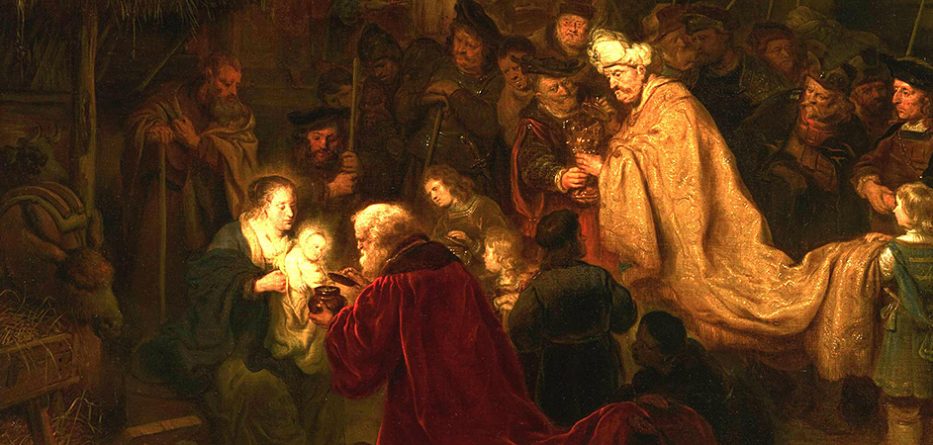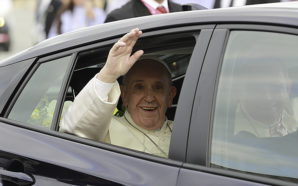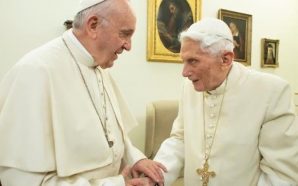They set out. Matthew 2:9 ┬Ā
5 January 2020, The Epiphany of the Lord
Readings:
Isaiah 60:1ŌĆō6, Psalm 71(72):1ŌĆō2, 7ŌĆō8, 10ŌĆō13, Ephesians 3:2ŌĆō3, 5ŌĆō6, Matthew 2:1ŌĆō12
Psychologists have a name for it: ŌĆ£the arrival fallacyŌĆØ. It describes those who think that once they get to some particular time, or place or goalŌĆöthen they will be happy. Once I finish the semester. Once I get married. Once I retire.
ItŌĆÖs called a fallacy because the expectation usually doesnŌĆÖt materialise. Having arrived, the promised happiness has retreated. Additional anxieties crop up. Happiness will have to wait.
The arrival fallacy helps to explain why we sometimes find Christmas so disconcerting. As children, we look forward to Christmas with boundless expectation. But, years of disappointment have taught us to prefer Christmas Eve. Better to await than to arrive.
But lest we despair, the celebration of the Epiphany brings us to our senses. From the movement of the magi, we learn that Christmas does not end with the birth of Christ. Rather, we, like the kings, are still on the way. Christmas joy must mature beyond its advent. For Christ has come, but he has not yet been made fully manifest. The Incarnation takes time to unfoldŌĆöat Bethlehem, on Calvary, and in the secrecy of each human heart. Christ has chosen to introduce us into his mysteries one day at a time.
So, we must seek him where he may be foundŌĆöin the humility of his appearing. The kings continue their course beyond Christmas day. Today they arrive at the manger. But, we who are still on the way must continue in search. For we will not have arrived until he is all-in-all.
Lord Jesus Christ, my heartŌĆÖs desire, draw me to you with each passing day until you are made all-in-all. Amen.
Fr Gregory Pine OP
Artwork Spotlight
The Adoration of the Magi ŌĆō Salomon Koninck (1609ŌĆō1656)
ŌĆ£The Adoration of the MagiŌĆØ, c. 1644ŌĆō1646. Oil on panel, canvas 81 x 66 cm. Mauritshuis, The Hague. Public Domain.
You would be forgiven if you thought you were looking at a Rembrandt. In fact, we looked at RembrandtŌĆÖs version of the Epiphany in our Advent Program in 2015. Salomon (de) Koninck was also a Dutch painter and, at one time, a pupil of Rembrandt. He began his training in A.D. 1621, and by A.D. 1632 had become a member of the Amsterdam Guild of St Luke. His wife, Abigail, came from a family of artists.
Koninck was known for his skill in the technique of what is called ŌĆ£fineŌĆØ painting. It is particularly noticeable in his rendering of fabrics and armour, for which he was much admired (notice the robes of the Wise Men in the accompanying painting.) It was considered that Koninck never achieved RembrandtŌĆÖs quality, yet he used the same effectŌĆöa dark background in order to highlight particular figures. He painted many scholars and Church Fathers reading or writing, men weighing their gold, counting their money or trimming quills. Accessories such as books, papers and money were all executed with minute precision.
Look now at The Adoration of the Magi which now hangs in The Hague. Mary and the Child are obviously in the spotlight. Mary is even leaning forward in an attitude of presenting the Child for MelchiorŌĆÖs veneration. The light emanating from the Child illuminates Melchior and Caspar. It reminds me of St PaulŌĆÖs promise that those who come to Christ are turned into the image that they reflect (cf. 2 Cor 3:18, 4:6). Above them, and centrally placed in the composition, is Balthazar standing under a parasol, and awaiting his turn to adore the Child. Joseph stands behind Mary in his usual poseŌĆöwith a walking stick, for he is ever-ready to change direction at GodŌĆÖs command. At the top of the painting is the famous star, its light dimmed now that it has pointed out the true Light.
Now, Koninck uses a technique common to many artists portraying biblical themes. He ŌĆ£orientsŌĆØ the scene as if it were taking place in his own day. While the Magi are dressed in traditional robes, notice the vesture of all in their entourage, including the page boys. It is contemporary costume! The viewer is also called upon to adore the Child!
St Ignatius of Loyola, the founder of the Jesuits, grasped this idea well. If you were to do his Spiritual ExercisesŌĆöa type of retreatŌĆöyou would be led through a series of meditations on the Gospels, and you would be asked to picture yourself in every scene, taking the place of one of the participants, letting the scene wash over you, and then asking yourself in prayer what effect this should have on your everyday life. For you canŌĆÖt walk away from Christ untouched. Many of us walk away from Mass having not heard the Gospel, thinking it must have been addressed to someone else. This is our last meditation/painting for Advent and Christmas. Where have I fitted in? Am I ready to spend my life in an attitude of profound adoration?
Pope Benedict XVI once said in a Christmas homily: ŌĆ£In the Grotto of Bethlehem, God shows himself to us as a humble ŌĆśinfantŌĆÖ to defeat our arrogance. Perhaps we would have submitted more easily to power and wisdom, but he does not want us to submit; rather, he appeals to our hearts and to our free decision to accept his loveŌĆØ(Christmas Homily at Midnight Mass, 2008).
A final note on the contemporaneity of the scene. Caspar is holding the famous Amsterdam Guild Cup. It begs the question whether Melchior is presenting something equally famous? But the message remainsŌĆöwe must offer the best of ourselves to Christ, knowing that he has better to give in return.
Monsignor Graham Schmitzer
Fr Gregory Pine OP is the assistant director for campus outreach with the Thomistic Institute in Washington, DC, USA. He served previously as an associate pastor at St Louis Bertrand Catholic Church in Louisville, KY, where he also taught as an adjunct professor at Bellarmine University. Raised in Philadelphia, PA, he attended the Franciscan University of Steubenville. Upon graduating, he entered the Order of Preachers in 2010 and was ordained a priest in 2016. He holds an STL from the Dominican House of Studies. He is a regular presenter on the podcasts: Pints with Aquinas, Godsplaining, and The Matt Fradd Show.
Monsignor Graham Schmitzer recently retired as the parish priest at Immaculate Conception Parish in Unanderra, NSW. He was ordained in 1969 and has served in many parishes in the Diocese of Wollongong. He was also chancellor and secretary to Bishop William Murray for 13 years. He grew up in Port Macquarie and was educated by the Sisters of St Joseph of Lochinvar. For two years, he worked for the Department of Attorney General and Justice before entering St ColumbaŌĆÖs College, Springwood, in 1962. Fr Graham loves travelling and has visited many of the major art galleries in Europe.
With thanks to the Diocese of Wollongong who have supplied the weekly Advent and Christmas 2019 reflections from their publication,┬ĀThe Way ŌĆō Advent & Christmas Daily Reflections 2019. You can read the reflections as they are published┬Āhere.








